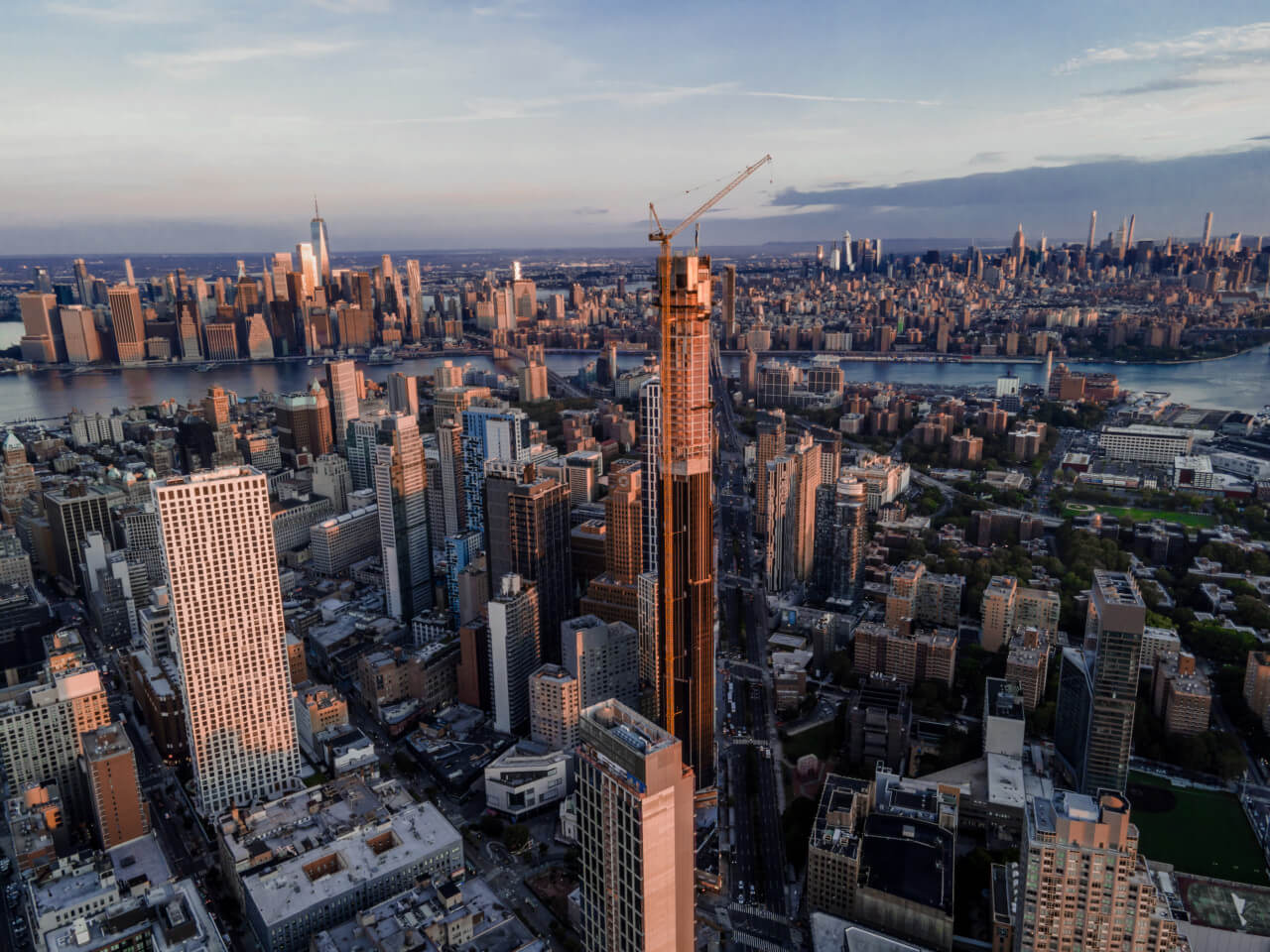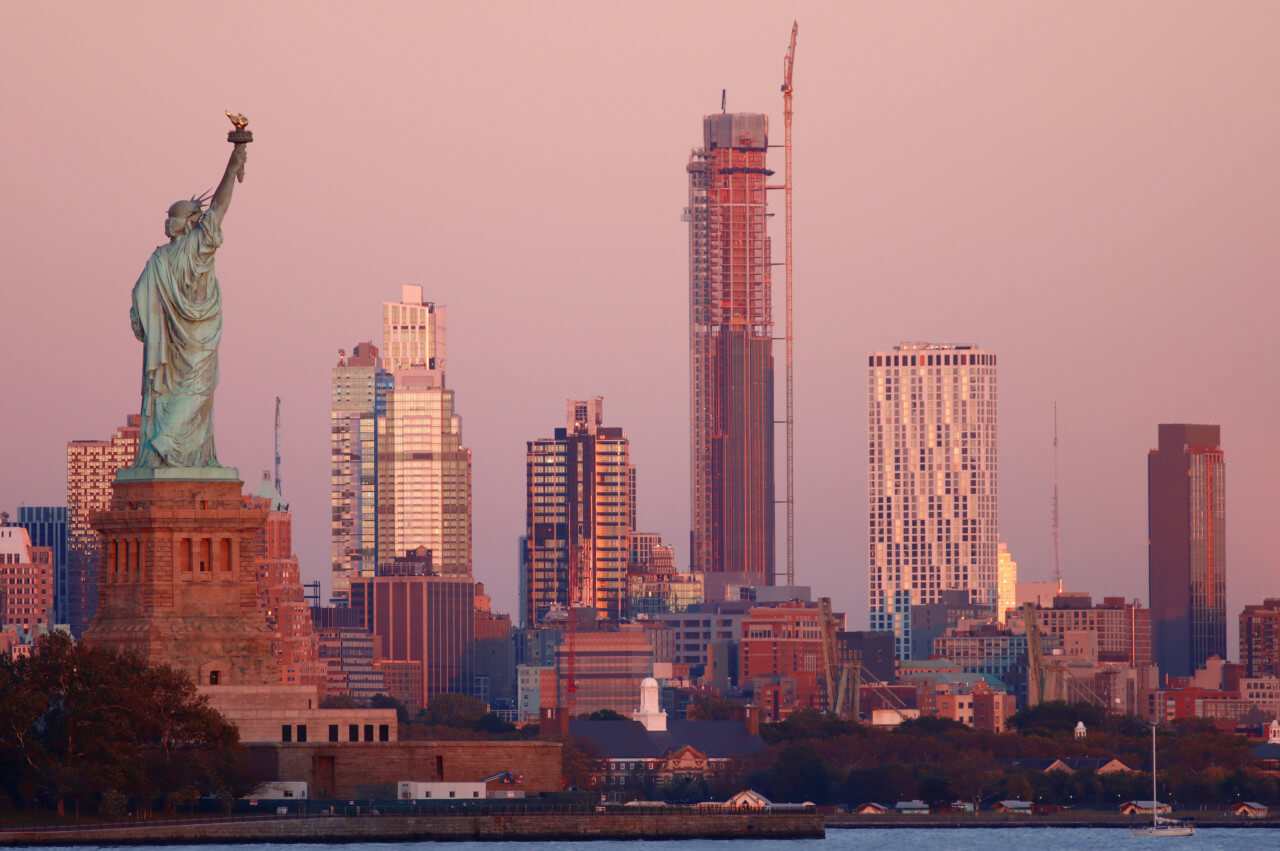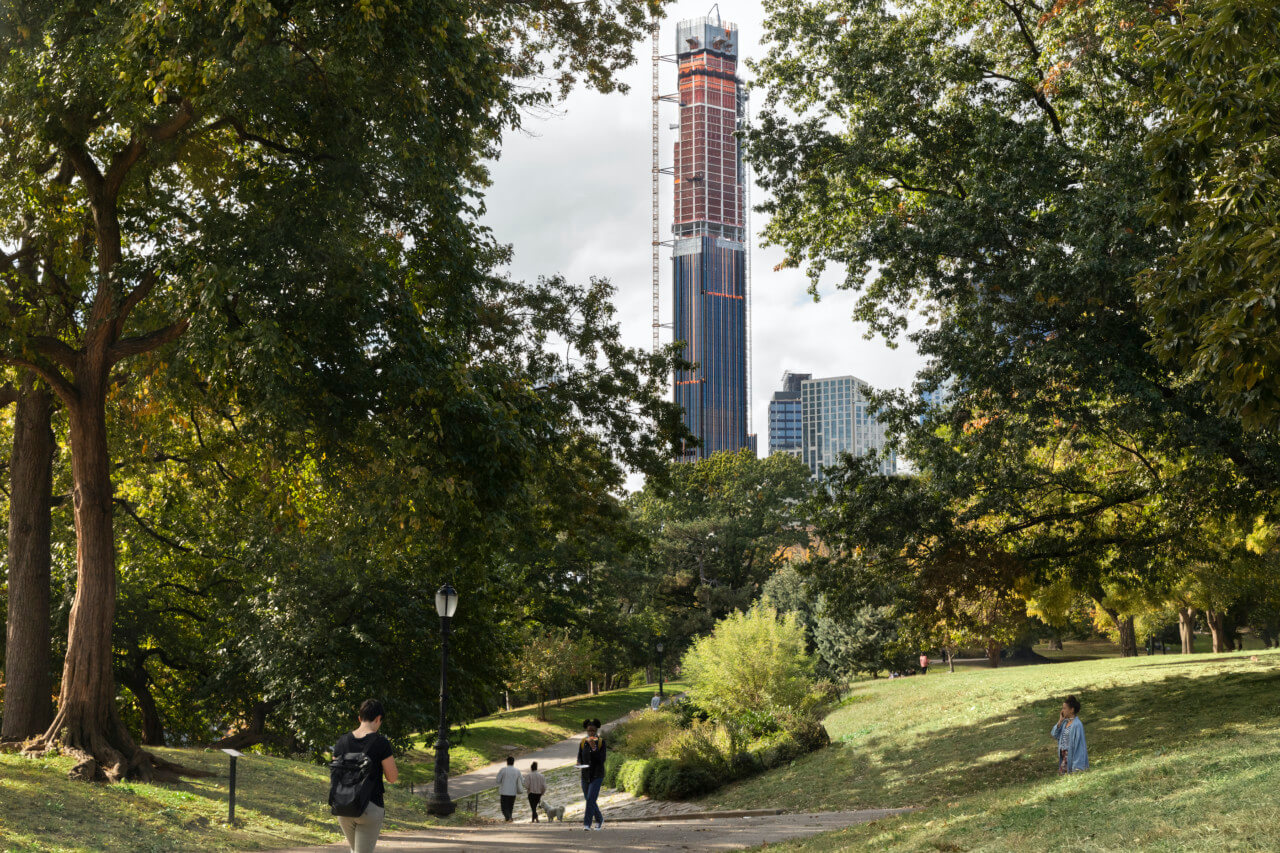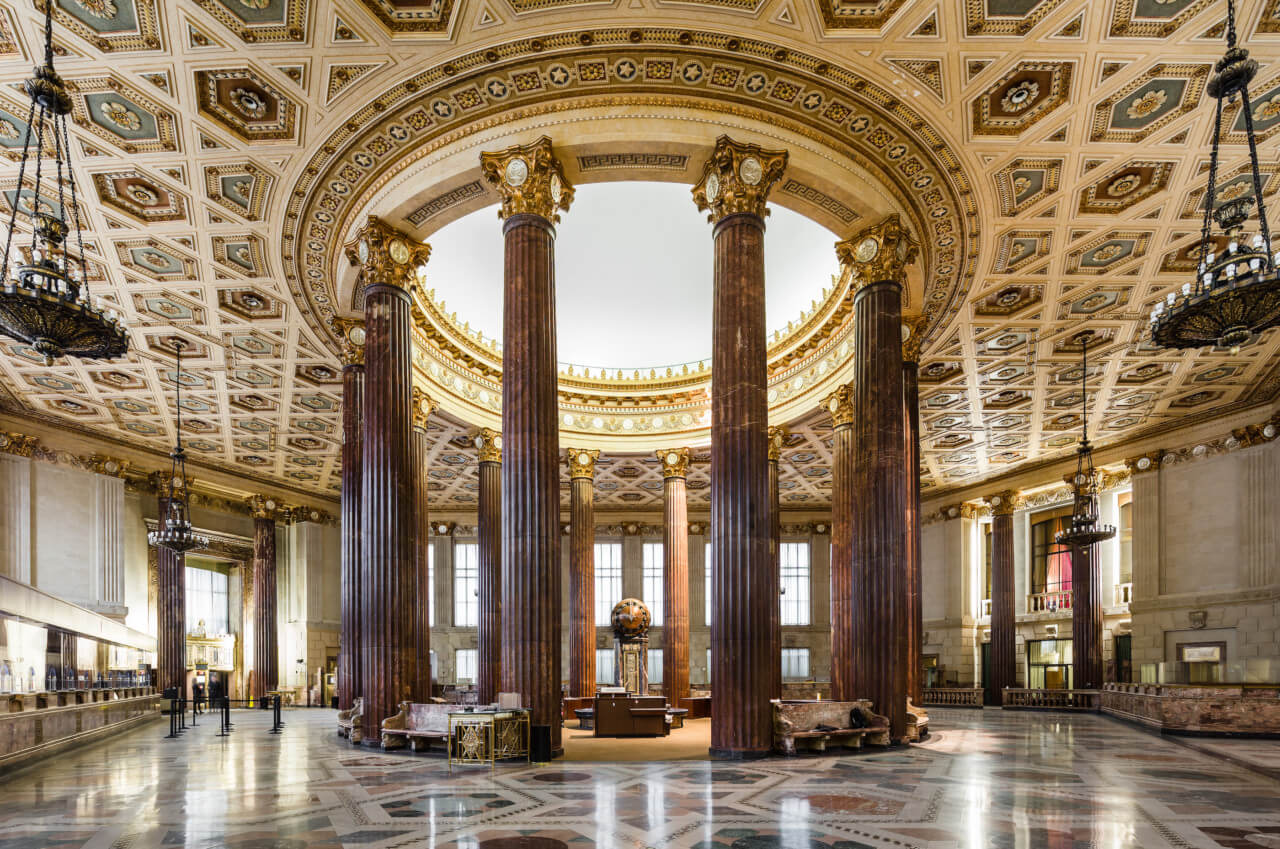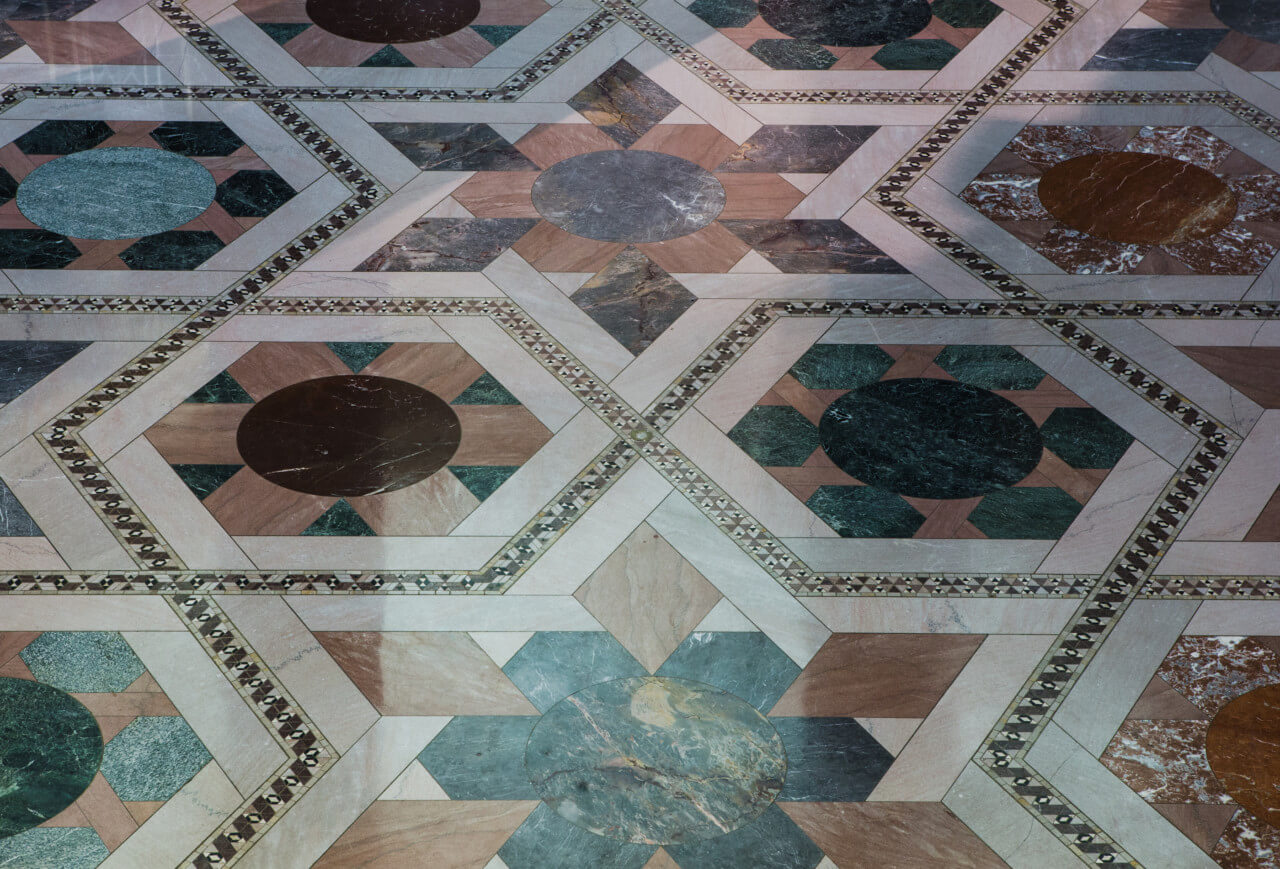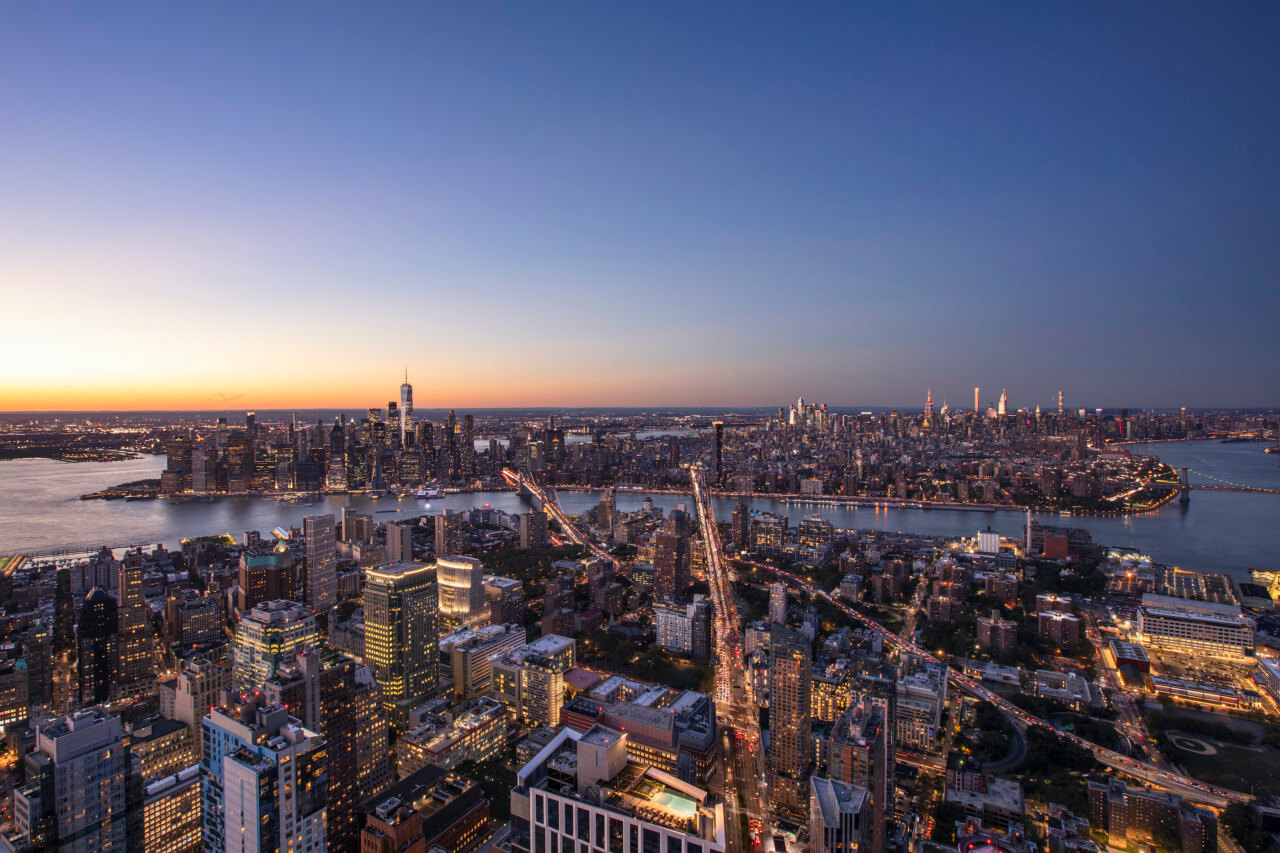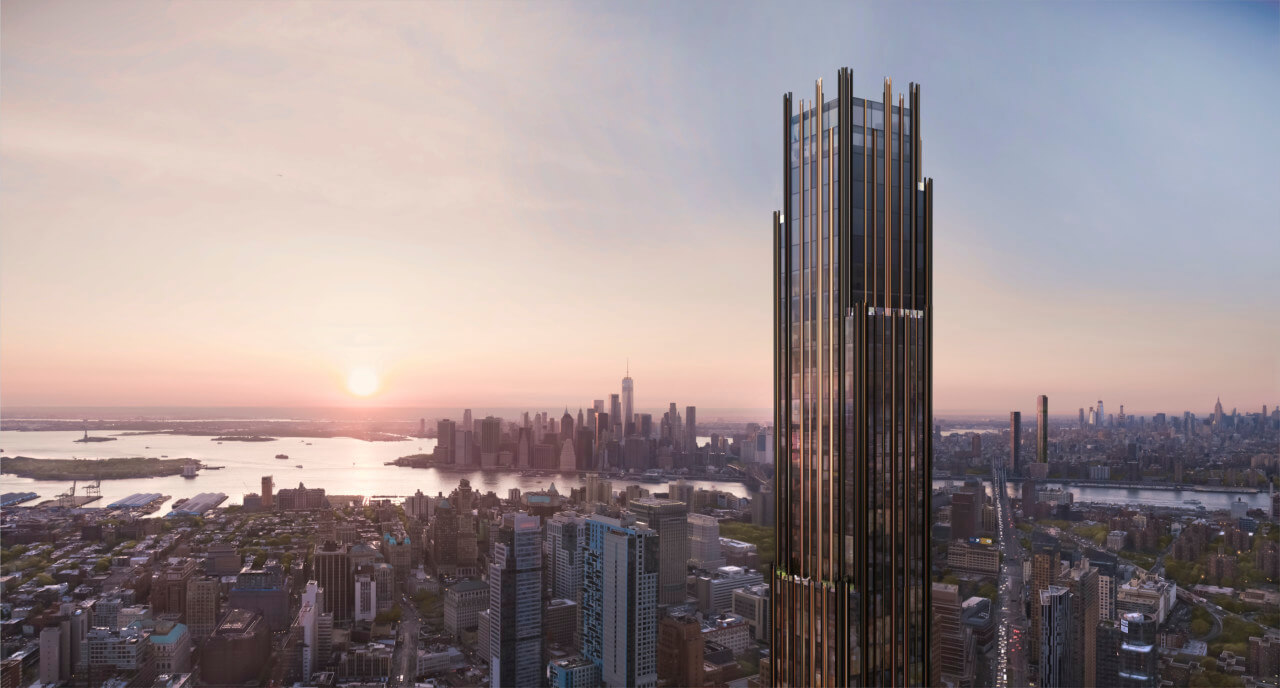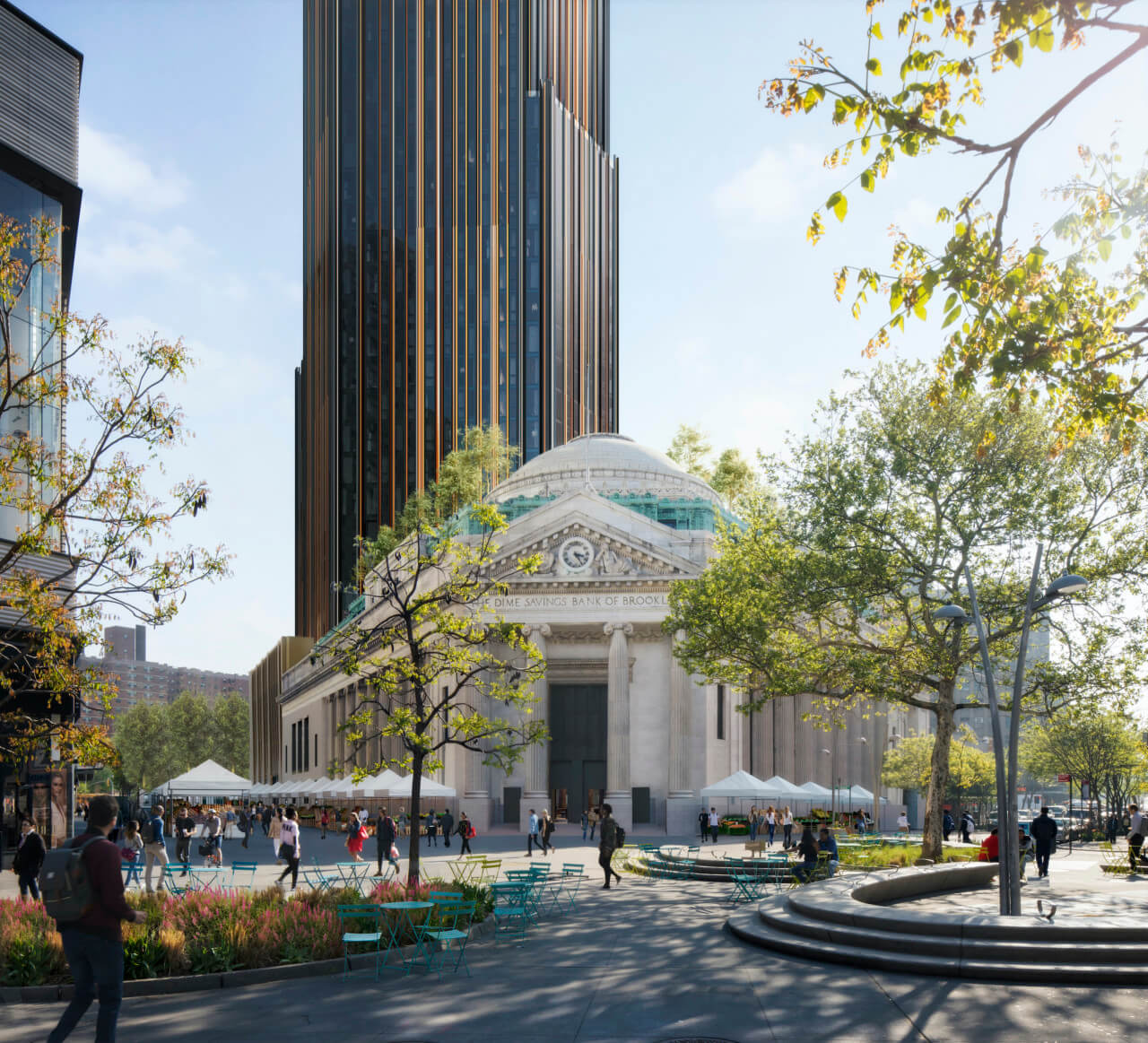The slim, curiously shaped skyscraper that has slowly but surely sprouted in downtown Brooklyn over the past two-plus years has reached its ultimate height; a supertall-qualifying 1,066 feet. Thrusting 93 stories above Flatbush Avenue and Fulton Street Mall’s Albee Square from a triangular corner lot, the SHoP Architects-designed tower at 9 DeKalb—officially christened as The Brooklyn Tower—is the first, and for now only, supertall tower in the borough and the tallest building in New York outside of Manhattan.
The topping out of the JDS Development Group project marks a significant milestone for the rapidly evolving Brooklyn skyline. For 80 years, the Williamsburgh Bank Tower, a neo-Romanesque 1929 commercial skyscraper-turned-condo-tower located several blocks up Flatbush Avenue at 1 Hanson Place, reigned as the lankiest building in the borough at just 512 feet tall. That all changed in 2009 with the completion of the 514-foot-tall Brooklyner, which has now been dwarfed by a slew of other skyscrapers in and around downtown Brooklyn that have risen over the past decade, including Kohn Pedersen Fox’s 720-foot-tall Brooklyn Point, which currently holds the title of the borough’s tallest completed skyscraper. Now, The Brooklyn Tower, a close neighbor of Brooklyn Point, soars even higher.
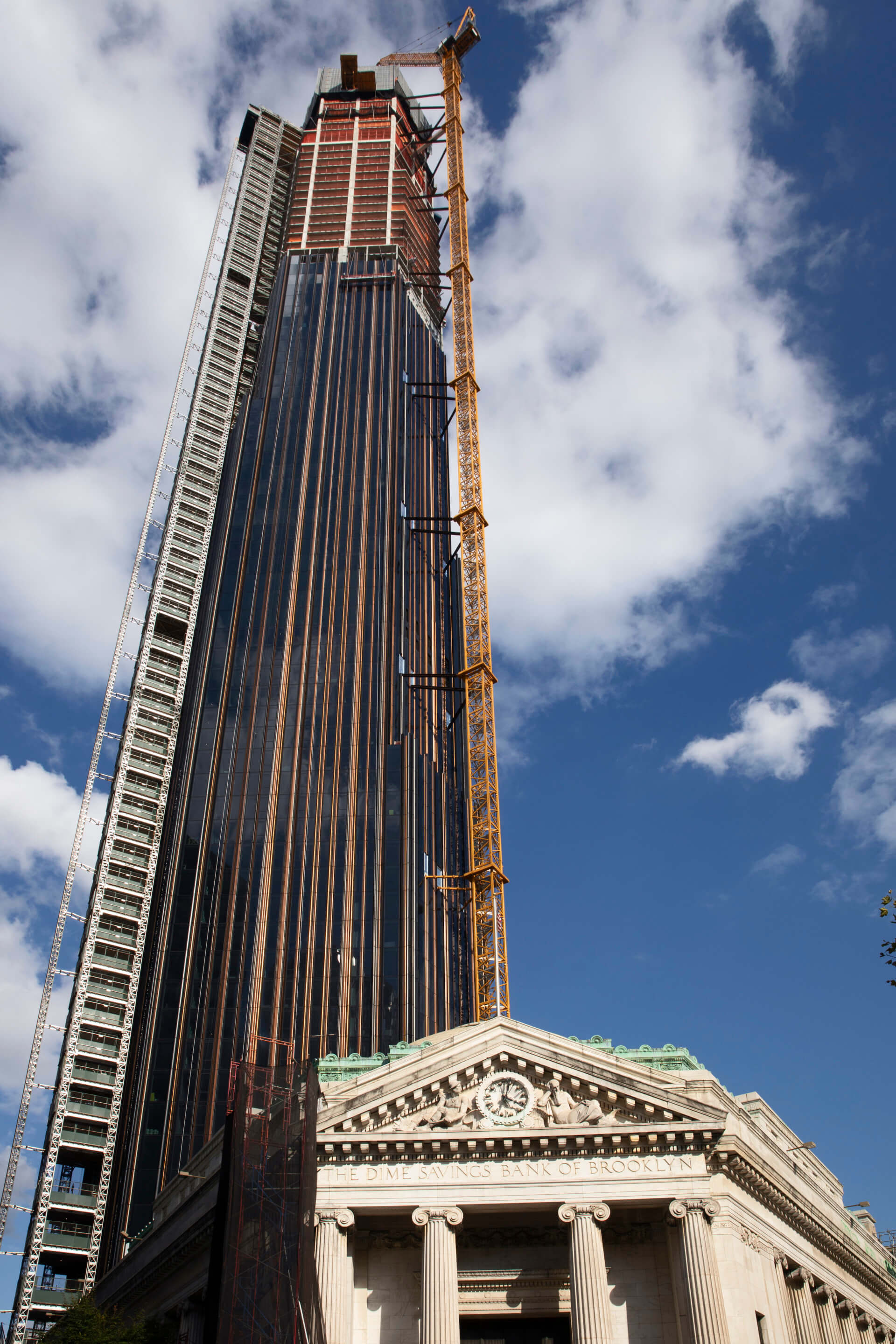
JDS and SHoP are marking the historic occasion fittingly. This morning, the developer and architect held a media event commemorating the topping out of the $750 million project that included a ride in a construction hoist elevator up to the tower’s unfinished 67th floor where Gregg Pasquarelli, founding principal of SHoP, JDS founder and CEO Michael Stern, and Howard Lorber, executive chairman of Douglas Elliman, gave remarks. On a brisk and sunny day, the view from atop was nothing short of sweeping. For those needing orientation while looking out across the city at such dizzying heights, numerous Brooklyn and New York City landmarks ranging from the Statue of Liberty to the Gowanus Canal were conveniently identified via signage applied to the reinforced concrete superstructure.
“I can’t think of a better view anywhere in the world—maybe I’ll move to Brooklyn,” quipped Lorber in his speech.
“People ask us if we’re trying to bring Manhattan to Brooklyn,” said Stern referencing the tower’s height. “And that’s certainly not what we’re doing here. We created a building of Brooklyn, bringing a tower that is almost as much a civic move as it is a move of commerce.”
Following the media event, SHoP and JDS hosted a slew of celebratory, family-friendly afternoon activities at Albee Square in collaboration with the Downtown Brooklyn Partnership, Street Labs, and Open House New York. Activities included an i-beam “time capsule” signing and tours of the historic Dime Savings Bank of Brooklyn building, which is being incorporated into the development and from which the tower “draws its DNA” per Stern (more on that in a bit).

In addition to The Brooklyn Tower, SHoP and JDS have previously come together for a pair of large-scale luxury residential projects: the East River-abutting, sky bridge-connected American Cooper Buildings and 111 West 57th Street, a 1,428-foot-tall tower with a terra cotta-clad facade whose pencil-thin profile casts a long and quick-moving shadow over Central Park. As noted by Pasquarelli at the event this morning, two more projects with the developer are in the pipeline including one in Lower Manhattan and another in Miami.
The Brooklyn Tower, which boasts hexagonal floor plates, “dramatic cascading setbacks,” and a handsome facade of blackened stainless steel, bronze, and glass with white marble at its base, is set to contain a total of 550 residences. An anticipated 400 units will be rentals (with 30 percent designated as affordable) that will become available for leasing in mid-2022. The remaining 150 units, all of them condos, will hit the market earlier in the year. Douglas Elliman is acting as exclusive marketing, sales, and leasing agent. The building is slated for occupancy in late 2022.
Residence interiors are designed by Gachot Studios while Krista Ninivaggi (her firm, K&CO, recently merged with Woods Bagot) is helming the design of the interior amenities, which is set to include over 100,000 square feet of health and fitness spaces. Exterior amenity spaces will include “unprecedented, elevated outdoor loggias for skyline lounging and recreation,” per a press release.
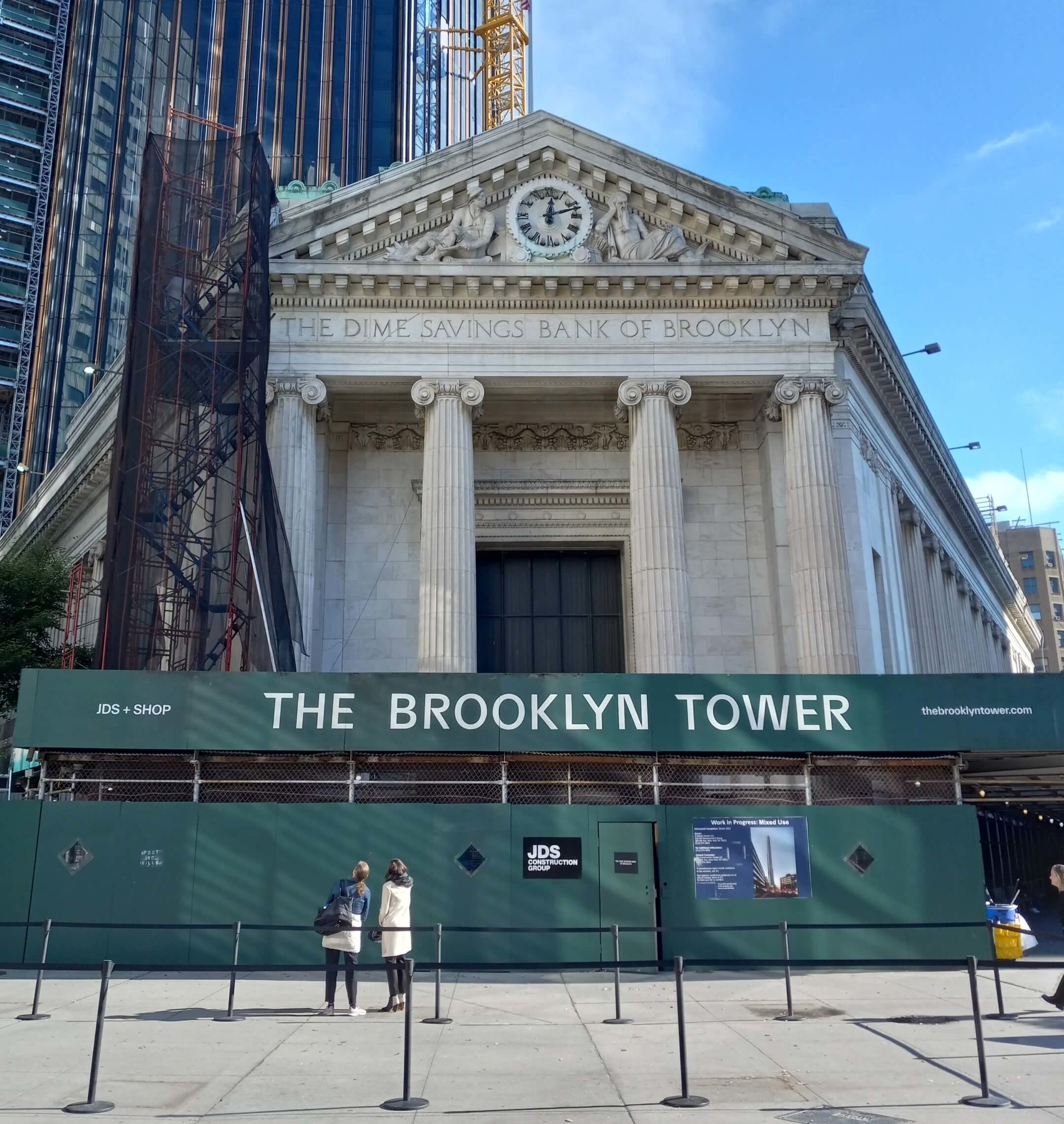
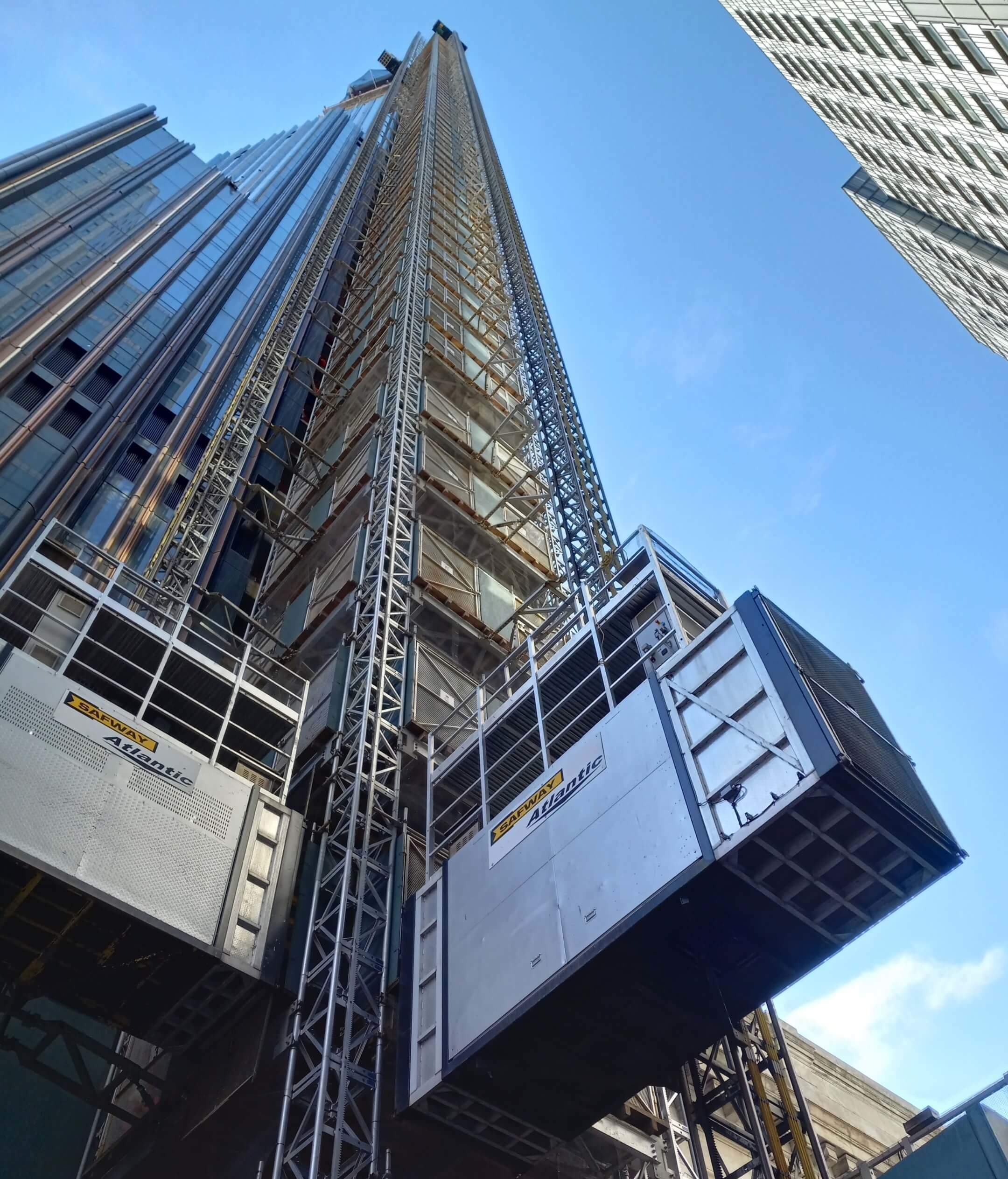
At its base, The Brooklyn Tower will include nearly 100,000 square feet of retail housed within the landmark former headquarters of Dime Savings Bank of Brooklyn, which, as mentioned, is being integrated into the development. While SHoP’s tower offers a refreshing departure from the slender glass rectangles that have come to dominate the New York skyline, the adaptive reuse of the marble-clad neoclassical bank building topped by a Guastavino tile dome that sits at its base is perhaps the most intriguing and anticipated aspect of the development. It is also why the tower tucked behind it looks the way it looks.
Completed in 1908 with a Greco-Roman design by pre-war bank specialists Mowbray & Uffinger, the structure was subsequently enlarged from 1931-1932 by the same New York firm that designed the aforementioned Williamsburgh Savings Bank Tower: Halsey, McCormack & Helmer (now known as Mancini Duffy). Widely regarded as one of the finest works of civic architecture in Brooklyn, the monumental bank building was designated as a New York City Landmark in 1994. JDS acquired the building and its air rights for $95 million in 2016. (Founded in 1859 and defunct since 2002 when it was acquired by the now also-defunct Washington Mutual, Dime Savings Bank of Brooklyn is sometimes confused with the 157-year-old Dime Savings Bank of Williamsburgh, which still exists under the name Dime Community Savings.)
The bank’s opulent and temple-like interior, which features bronze friezes and a soaring rotunda supported by twelve red marble columns, will be restored and fused with the tower through newly established entryways on Flatbush Avenue Extension and on Fleet Street, where building residents will enter the tower’s main lobby through the bank’s revived Ionic colonnade. On a future roof deck that will span the top of the bank building and the fifth floor of the tower, there are plans for a dome-side swimming pool and outdoor lounge area.

Notably, the interior of the bank is a veritable festival of hexagons, from the coffered ceiling to the intricate marble flooring, which is echoed in the hexagonal massing of the tower above it. As SHoP and JDS have argued long before its topping out, the supertall acts to give renewed prominence to the bank building, not dwarf it.
“This design is interesting, exciting, and respectful in the way that it tips its hat to the primacy of the landmark,” said Meenakshi Srinivasan, former chair and commissioner of the Landmarks Preservation Commission of New York (LPC), when the proposal for the project was unanimously approved by the commission five years ago.
“There’s a sort of brooding Gotham to it,” Pasquarelli told AN of the now-topped-out tower back in 2016 shortly after it won approval from the LPC. “There’s a little bit of badass to it, but it’s quite elegant at the same time. Isn’t that what we all want to be as New Yorkers?”
AN will continue to track the progress of the revamped Dime Savings Bank of Brooklyn and the skyline-altering tower that now flanks it as they inch together as two Brooklyn landmarks from different eras, one new and one reborn, toward completion.






